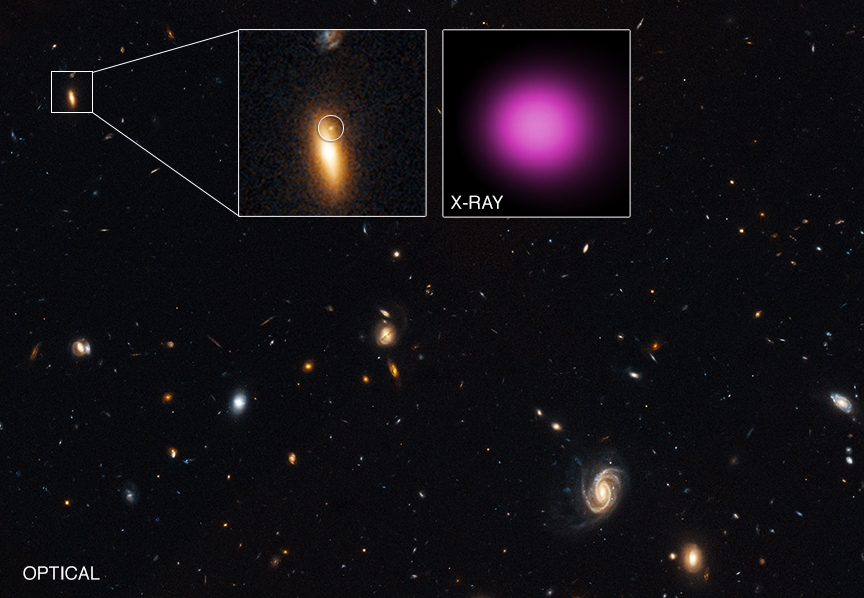
 Credit: X-ray: NASA/CXC/UNH/D.Lin et al; Optical: NASA/STScI
Credit: X-ray: NASA/CXC/UNH/D.Lin et al; Optical: NASA/STScI
Decentralized Black Hole
Galactic cannibalism, where a larger galaxy consumes a smaller one, seems to be a fairly frequent occurrence in the cosmos. Extragalactic space is actually crowded (relatively speaking) so that small galaxies sometimes wander close to larger neighbors and are gravitationally torn asunder and merged into the more massive galaxy. When this happens, the stars, gas, dust from the smaller galaxy become part of the larger one. And any black holes in the smaller galaxy will join the larger one as well. In 2002, observations with the XMM-Newton X-ray observatory of a region of space found a bright source of X-rays in a distant galaxy. Follow-up observations with XMM-Newton and the Chandra X-ray Observatory showed that this source varied in its X-ray brightness by large amounts, eventually fading away into obscurity. The X-ray image of this source is shown in the inset above, while the region containing the galaxy, and a close-up of the galaxy, are shown in the optical images. At its brightest, the X-ray source was so luminous that it's most likely a small supermassive black hole (of "only" 100,000 times the mass of the Sun). The unusual location of this supermassive black hole in the outskirts of its host galaxy indicates that the black hole was probably located at the center of a small galaxy which got swallowed by the larger galaxy. The X-ray brightening and fading is a bit of a puzzle. Astronomers suggest that the X-ray flaring probably indicates that the black hole swallowed a nearby star. So be careful what you eat, since it could wind up eating you.
Published: October 10, 2016
<
HEA Dictionary ● Archive
● Search HEAPOW
● Other Languages
● HEAPOW on Facebook
● Download all Images
● Education ● HEAD
>

Each week the HEASARC
brings you new, exciting and beautiful images from X-ray and Gamma ray
astronomy. Check back each week and be sure to check out the HEAPOW archive!
Page Author: Dr. Michael F. Corcoran
Last modified Monday, 26-Feb-2024 17:24:28 EST


